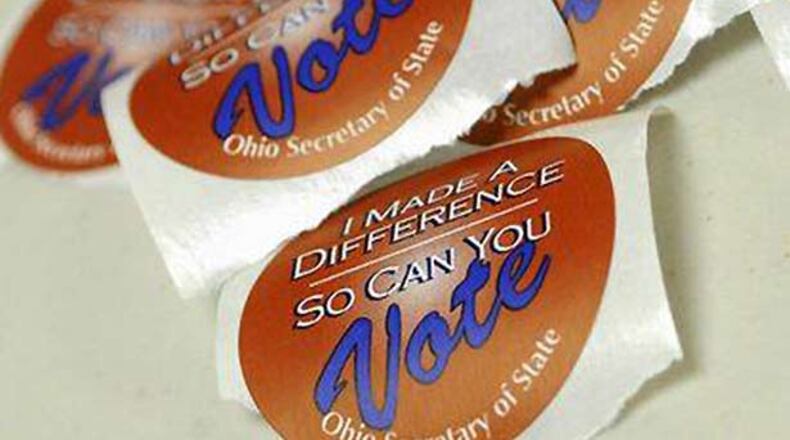City officials said Dayton’s government needs the roughly $22 million generated annually by the 0.5 percent tax levy on a permanent basis. Issue 6 eliminates the need to put a renewal measure on the ballot, they say.
“It costs money to put it on the ballot, it costs money to do a campaign and also it costs money not having a permanent source of revenue on municipal bonding,” said Dayton Mayor Nan Whaley. “It is costing us money at every turn.”
But critics say that keeping the 0.5 percent tax levy temporary would empower voters by giving them a check on government spending.
“I will be voting no because it is permanent,” said former Dayton Mayor Gary Leitzell. “They want us to give up the future needs of our children and grandchildren for their immediate needs now.”
Dayton’s income tax is paid by individuals who work in the city — regardless of where they live — and businesses that are located in the city or provide services there.
Dayton residents who work in a different city or township also have to pay all or part of the tax, if their work jurisdiction has a lower tax rate than Dayton’s.
Voters first approved making 1.75 percent of the city’s income tax permanent in 1984, and they also authorized increasing the tax rate to 2.25 percent for six years. The city administration at the time was facing a $9 million shortfall.
Voters overwhelmingly approved renewing the 0.5 percent tax four times since then, most recently in 2006, when it was approved by nearly 85 percent of the voters. Previous renewal measures also included a $5-per-year property tax credit for homeowners who are disabled or senior citizens, but the credit has since been eliminated.
Whaley said Issue 6 will keep tax rates the same as they have been for three decades, and past renewals were overwhelmingly successful because voters understood the importance of the services supported by the levy money.
The 0.5 percent tax levy has generated between $21.8 million and $25.3 million each year for the city since 2000, and the money accounts for more than 14 percent of Dayton’s general fund revenue. The levy generated about $24 million for the city in 1990.
The city’s general fund budget this year is $158.5 million, and the city employs about 2,000 workers, including 350 sworn police officers and 326 firefighters, paramedics, emergency medical technicians and support staff.
“I think voters know that we’ve managed really well through tough times, and unlike other communities that have asked for tax increases, we have not,” Whaley said.
Supporters say that passage of Issue 6 is vital to the city’s long-term financial stability.
“Making this renewal permanent, will allow city leaders to continue to focus on economic development and business services, instead of running a levy campaign every 5 years,” said Phil Parker, the president and CEO of the Dayton Area Chamber of Commerce, which has endorsed the levy.
But Leitzell said the city should not pursue a permanent levy, because voters in the future should be able to decide whether they want to lower the city’s income tax rate. Businesses may be hesitant to set up shop in Dayton because the tax rate impacts their earnings.
“Times change, circumstances change,” he said. “This is not 1984 and this is not conducive to an entrepreneur-friendly city.”
The only local community that has a higher income tax rate than Dayton is Oakwood (2.5 percent). Dayton’s rate is the same as Kettering’s, Miamisburg’s, Trotwood’s, West Carrollton’s and Xenia’s.
Seven of Ohio’s 10 largest cities, including Dayton, have income tax rates of 2.25 percent or higher. Canton, Cincinnati and Cleveland have lower rates.
Columbus’ city income tax was 2 percent until 2009, when voters approved permanently increasing it by 0.5 percent.
The measure passed because residents and businesses understood that a city cannot be successful without investing in it, and levy’s passage was necessary to avert mass layoffs and cuts to critical programs, said Dan Williamson, deputy chief of staff for Columbus Mayor Michael Coleman.
Businesses do not want to move to cities where there is uncertainty about police protection, garbage pickup, snow removal and basic services, Williamson said. But officials in other Ohio cities are eyeing income tax reductions as a way to save taxpayers money.
Toledo Mayor Michael Collins said he wants to lower the city’s 2.25 percent income tax — of which 0.75 percent is temporary — to a permanent tax rate of 2.2 percent.
In the past, Toledo officials have discussed making the city’s 0.75 percent tax renewal permanent, but they always decided against putting it on the ballot, said Lisa Ward, a city spokeswoman.
About the Author
